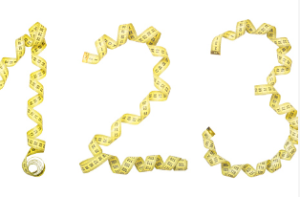Types of Directions
Following directions is an important life skill. There are many types of directions and they are everywhere. They are in the classroom, like when the teacher says, ‘sit down at your desk’ or ‘get out your book and turn to page 6.’ Directions are at home too. For example, when the caregiver says, ‘go get your shoes’ or ‘set the table for dinner.’
The first two types of directions are verbal vs. written. They mean exactly what you think. Written directions are given in writing (i.e., reading directions to a board game, reading a recipe). Verbal directions are given verbally (i.e., a teacher telling students instructions to complete an assignment, a caregiver telling a child to clean their room).
The next two types of directions are simple vs. complex. Simple directions are basic, one-step directions with one element. For example, ‘point to the ball’ or ‘show me the shoe.’ Adding steps or elements increases the complexity of a given direction. Life is full of complex directions. Unfortunately, many people give directions that are difficult to follow without even realizing it. We have all had that teacher that never stopped talking to give us enough time to complete the instructions given.
Let’s discuss the steps and elements further.
Steps
Directions can range from 1 to 3 steps. Multi-step directions involve following two or more steps at a time. There can certainly be more than 3 steps to a direction, but I personally don’t work on more than 3 step directions. My reasoning- most people struggle to remember and follow more than 3 steps at a time.
Elements
In addition to steps, there are elements that can be added. For example, pick up the red ball is one step, but you are adding a qualifying element of red to the object ball.
Sequential– Adding a specific order (first, second, third, then, last)
as in ‘first point to your knee, then point to the ceiling’
Spatial– Adding location to the direction (i.e., under, above, next to, between)
as in ‘point to the car under the chair’
Temporal– Adding terms that refer to time (i.e., before, after, in between)
as in ‘touch your head before you touch your ears’
Quantitative– Adding numbers (i.e., one, two, three)
as in ‘clap three times’
Conditional– Adding in certain conditions (i.e., if/then)
as in ‘if there are three chairs, touch your nose, if not, count to three’
Qualitative– Adding descriptive elements (i.e., color, size, shape)
as in ‘point to the big red ball’
You can see that these elements overlap, like sequential and temporal. The key difference between sequential and temporal directions is that sequential directions follow an order and temporal directions relate to time.
Goals
Following directions is a common goal for receptive language skills. Below are how I write my goals.
Johnny will independently follow <#> step basic directions given verbally in 8/10 trials across 3 consecutive sessions.
Susie will independently follow <#> step sequential directions given verbally in 8/10 trials across 3 consecutive sessions.
Raymond will independently follow <#> step directions given verbally containing qualitative, quantitative, spatial, or temporal concepts in 8/10 trials across 3 consecutive sessions.

What are common classroom directions given? Let us know in the comments below?



